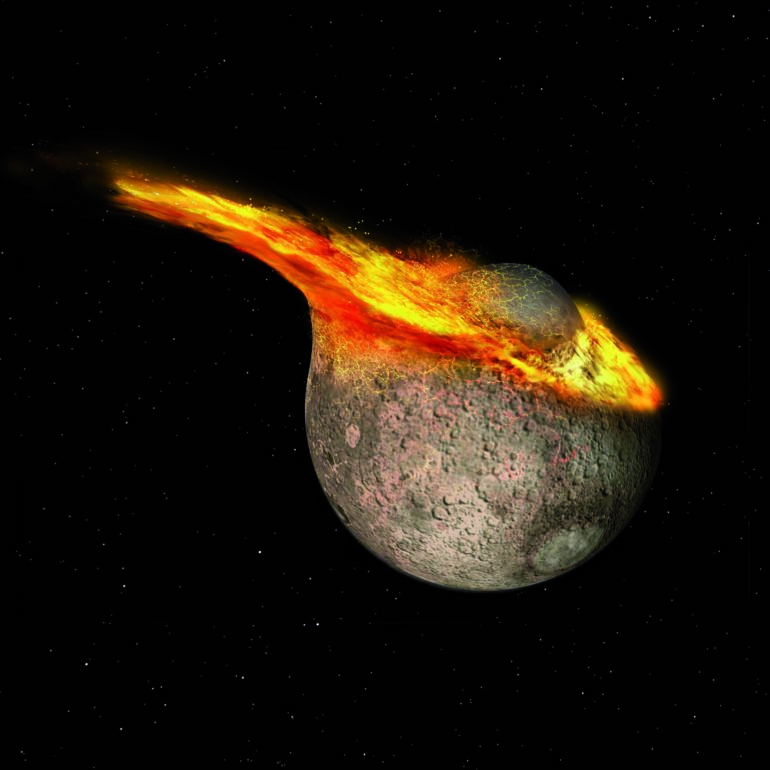The moon formed a little later than previously assumed. When a Mars-sized protoplanet was destroyed in a collision with the young Earth, a new body was created from the debris ejected during this collision, which became the moon. Planetary geophysicists at the German Aerospace Center (Deutsches Zentrum für Luft- und Raumfahrt; DLR), led by Maxime Maurice, together with researchers at the University of Münster, have used a new numerical model to reconstruct the time at which the event occurred—4.425 billion years ago. The previous assumptions about the formation of the moon were based on an age of 4.51 billion years—that, is 85 million years earlier than the new calculations reveal. The scientists have reported their findings in Science Advances.
Four and a half billion years ago, the solar system was still chaotic. Earth was still growing to its present size, collecting matter in the form of what are referred to as planetesimals. These had previously formed in the disc of dust and gas orbiting the early sun. The young Earth consolidated, becoming ever hotter inside. Increasingly, large parts of the rocky mantle melted and formed a magma ocean. It is at this time that Earth gained the natural satellite that continues to orbit around it to this day. A massive cosmic collision between Earth and a protoplanet ejected rock from the young Earth. Eventually, this debris agglomerated to form a new planetary body—the moon.
In principle, most scientists agree about how the moon formed, but not about the details of the process, and especially…
